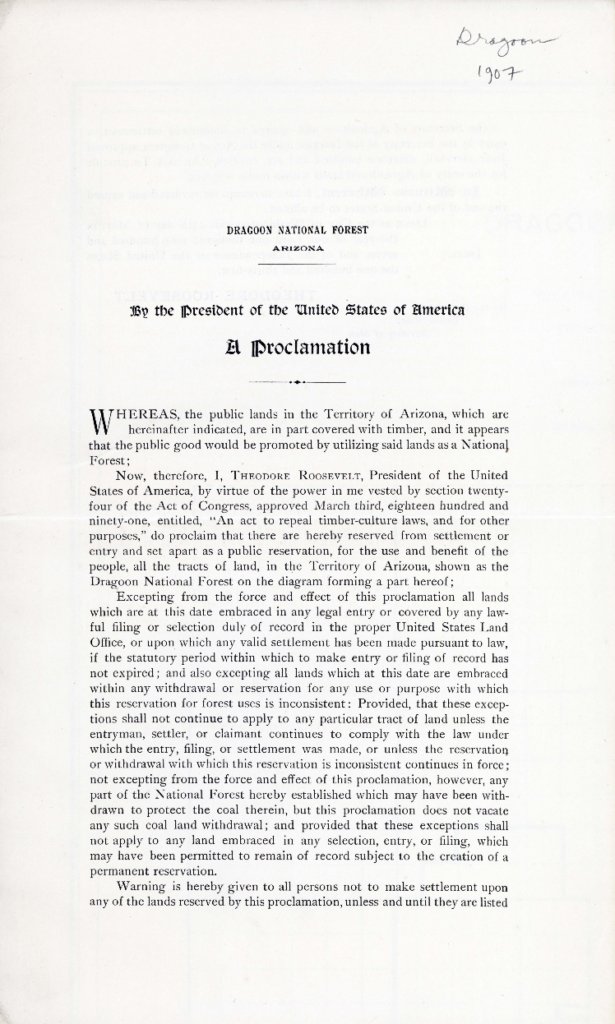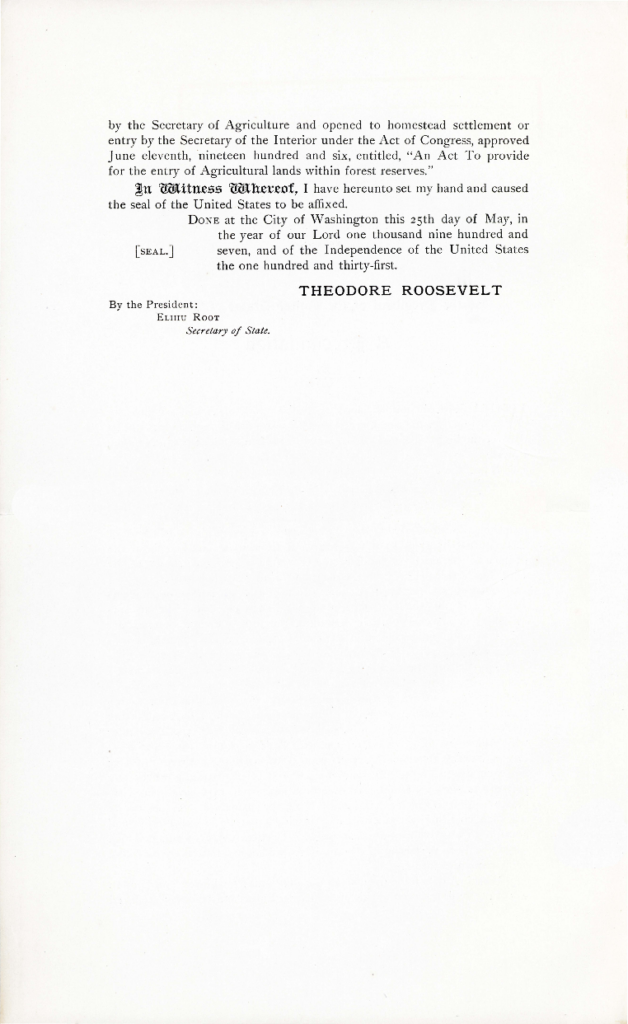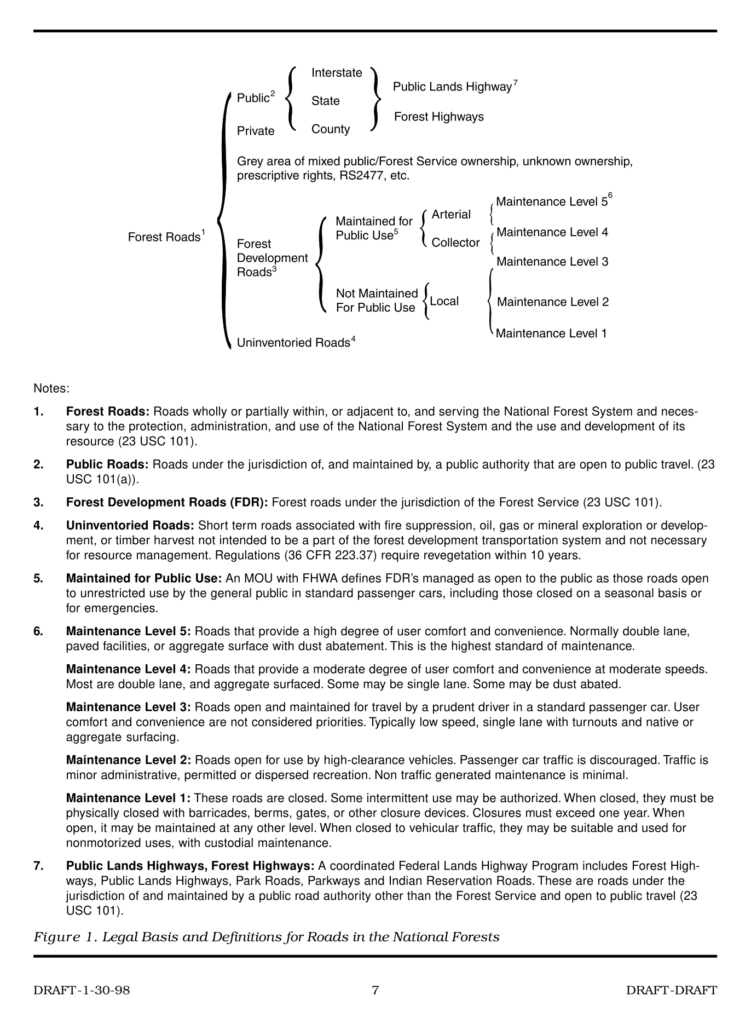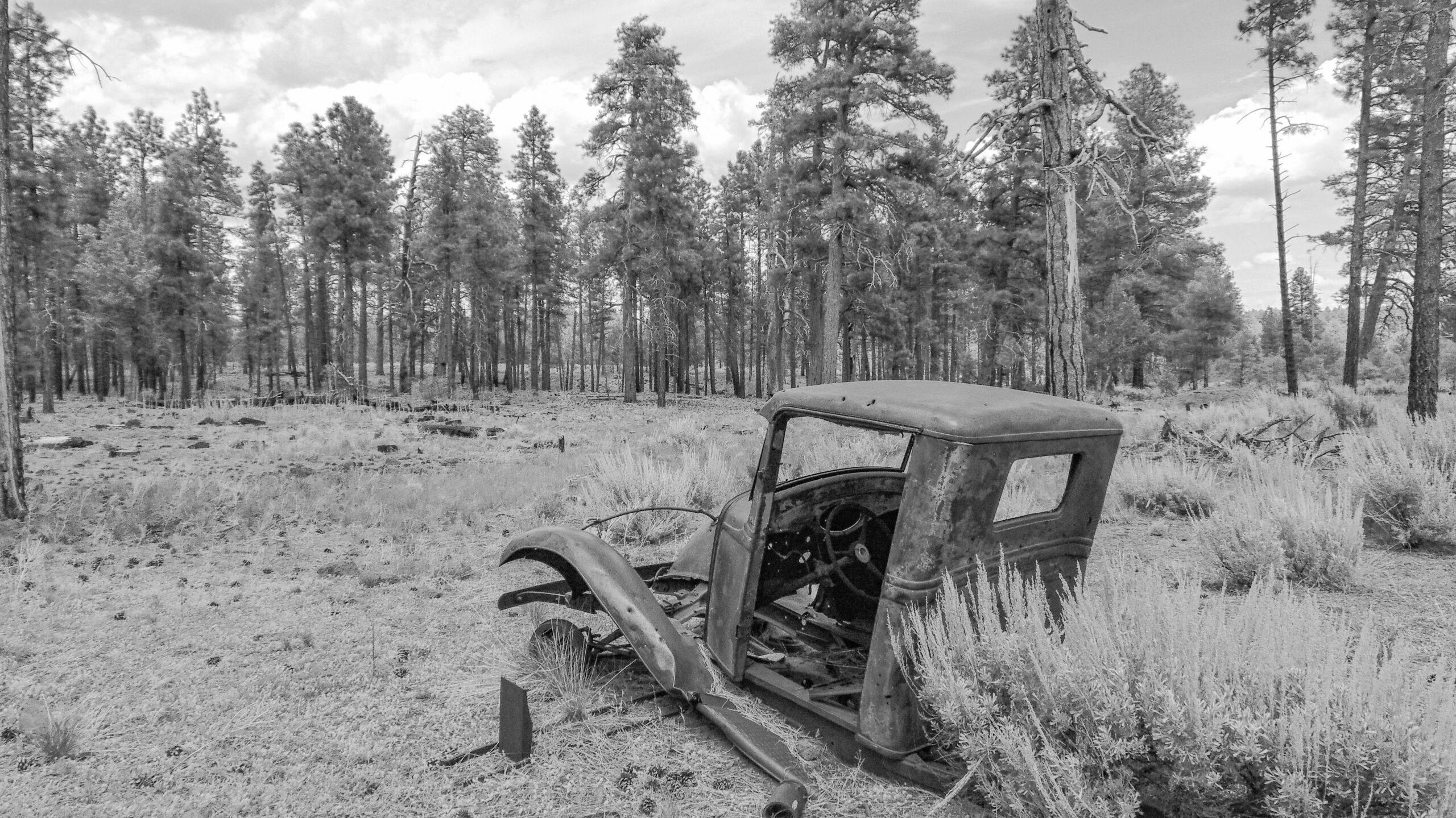Unlike other agencies, the U.S. Forest Service has never formally recognized RS 2477 rights-of-way. However, RS 2477 can still apply in National Forests if the road existed before the land was set aside as a Forest Reserve, later expanded, and eventually designated as a National Forest.
Many presidential proclamations designating Forest Reserves and National Forests recognized existing rights. For example, the proclamation establishing the Dragoon National Forest in Arizona, now part of the Coronado National Forest, explicitly excepts lands “embraced in any legal entry” or “covered by any lawful filing or selection duly of record,” as well as lands subject to “valid settlement.” RS 2477 rights-of-way, being statutory rights arising from actual public use, could be interpreted as “lawful” or “valid” claims under these terms.


Establishing a timeline comparing the existence of RS 2477 rights-of-way with the designation and expansion of Forest Reserves and National Forests is critical to any RS 2477 challenge within a National Forest. This process demonstrates whether a right-of-way existed before the Forest Reserve or National Forest was set aside.
The U.S. Forest Service acknowledges the existence of RS 2477 roads within National Forests. In 1998, the National Forest Road System and Use report was compiled by the United States Department of Agriculture Forest Service Engineering Staff in Washington, DC, under the guidance of Gerald Coghlan, Acting Director of Engineering, and Richard Sowa, Transportation Development Program Leader. The report provides details about the extensive National Forest road system across the U.S.
In the report, the U.S. Forest Service officially states:
“Although not claimed by a public road agency, some of these uninventoried roads are subject to claims as public roads under prescriptive rights and Revised Statute 2477. These authorities address public access rights over travelways existing prior to establishment of the National Forests and grasslands. Prescriptive rights apply to acquired lands, and Revised Statute 2477 applies to lands reserved from the public domain.”

In 1999, The U.S. Forest Service issued the report Roads Analysis: Informing Decisions About Managing the National Forest Transportation System. In this report, the US Forest Service provides several examples of questions that may be asked during a road analysis to assess benefits, problems, and risks. “Benefits are the potential uses and socioeconomic gains provided by roads and related access. Problems are conditions for certain environmental, social, and economic attributes that managers deem to be unacceptable. Risks are likely future losses in environmental, social, and economic attributes if the road system remains unchanged.”
On page 28 of this report, the US Forest Service recognizes their limited jurisdiction over RS 2477 rights of way and suggests that the department consider the existence of roads that fall under RS 2477 and how their planning decision will impact their management.
“How does the road system affect managing roads with shared ownership or with limited jurisdiction? (RS 2477, cost-share, prescriptive rights, FLPMA easements, FRTA easements, DOT easements)?”

